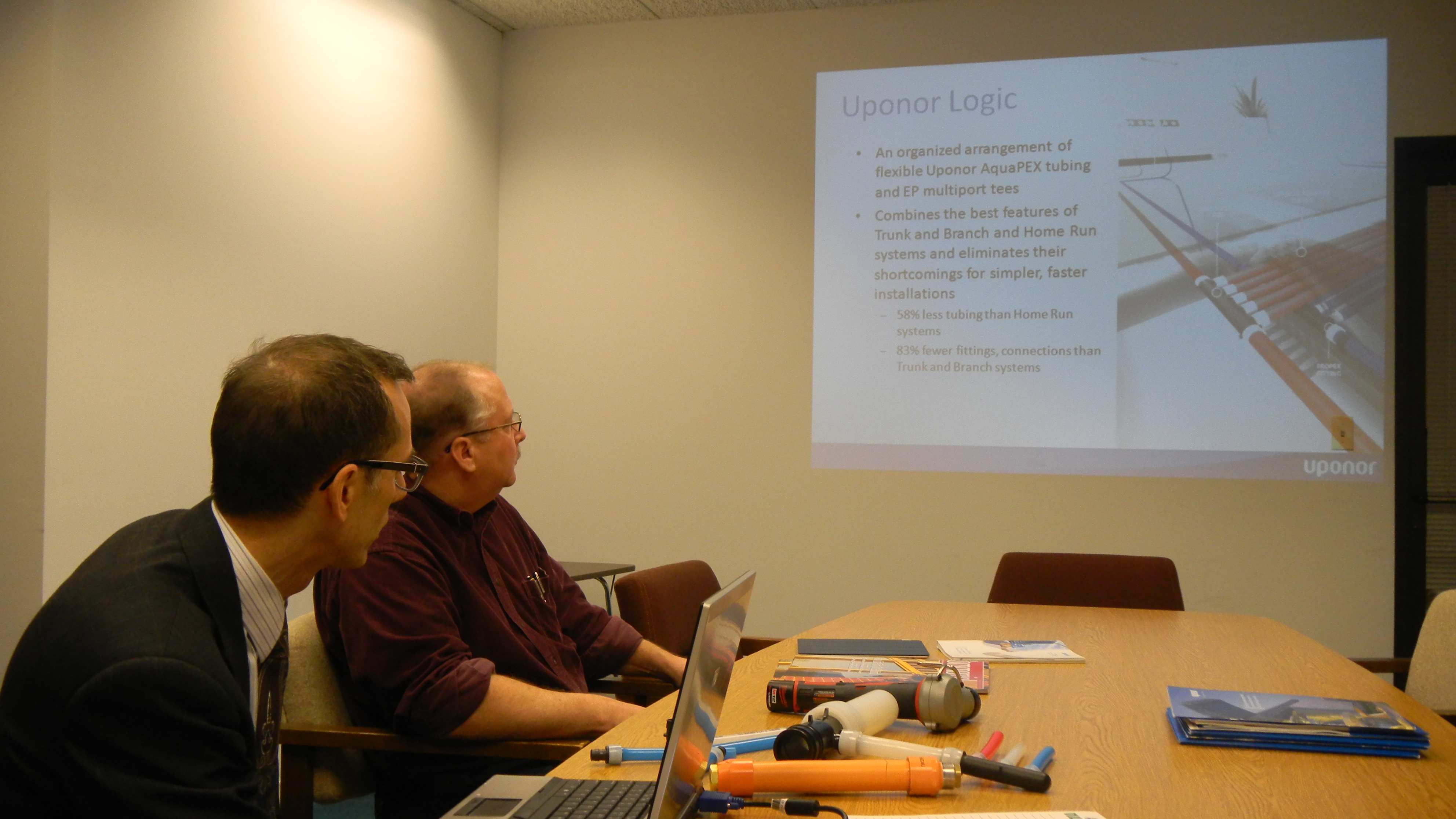Posts Tagged ‘public relations and marketing’
- Oct
- 22
Posted on October 22, 2012 by Nora DePalma
So your building products brand has a Twitter account, and an iPhone app is in the works. Think that’s effective marketing communications to successfully engage Millennials? A new generation is beginning to buy starter homes and tackle home improvement projects, and their attitudes toward advertising and branding are vastly different than other age groups. Millennials – young people ages 16 to about 34 – are sophisticated consumers who are fluent in technology, heavy users of social media, and they can see right through traditional advertising techniques.
Here are a few tips for successfully engaging these young consumers:
Give something back. A study by PR News found that Millennials are 7% more likely to choose a product if the purchase supports a cause than non-Millennials. If your brand supports a cause, especially a cause the brand shares a relevant and authentic connection to, it can be easier to gain the attention and respect of the Millennial generation according to a study by Cone Inc. and AMP.
Cause marketing can also be an excellent loyalty strategy when targeting young consumers: Millennials who feel a deep commitment to a cause can be more likely to develop a “strong personal relationship” with a brand that supports that cause.
Be a smart social butterfly. The importance of having a social media presence for your brand is old news by now, but make sure you’re managing your accounts in a thoughtful way. Social media is first and foremost about interaction, so don’t just broadcast promotional posts and tweets and call it a day. Look at what your target audience is already chatting about and converse, don’t sell.
Millennials want the opportunity to speak to and about your brand. Ask them engaging questions through your social media accounts, and provide space to rate and review products. The younger generation can be turned off by straight marketing pitches, so conversation is key.
Creativity counts. One of the best ways to gain the attention of Millennials is to produce fun, creative social content. A relatively small investment in creating a unique campaign on Facebook or YouTube can result in millions of impressions if the content is appealing to young consumers and they find it to be something that is worth sharing.
This point is particularly key in the building products industry. Prospects need education on the process and the products. Edutainment fits the bill: inspiring confidence and action.
Finally: keep your messaging consistent across all your earned, owned and paid media outreach. Not only will you maximize awareness, you build trust with a generation that has an innate mistrust of marketers.
- Jan
- 16
Posted on January 16, 2012 by Heather McCune
Does design translate into improved sales and profitability? Next time you venture into one of its fast-food eateries, be prepared for a very different McDonald’s—a redesign that may just inspire you to rethink your order and your own approach to business.
According to USA Today, an ambitious $1 billion redesign is occurring under the Golden Arches. Gone are the garish red roofs, primary colors, plastic benches and tables, and the “get-in/get-out” feel of the country’s biggest fast-food franchise. In their place are wooden tables and chairs, comfortable faux-leather seating a la a certain coffee-shop chain with an outlet on every corner, and a color palette with much subtler hues. Outside, the makeover features an exterior heavy on earth tones and glass. Even the famed arches take on a more subtle shape.
The overall effect is a more modern look that the company hopes will appeal to more than just the moms and kids who currently fill most outlets.
Why invest in the environment? The redesigned test stores in Tampa recorded a double-digit sales increase. Moreover, the product mix ordered by customers changed as well, as they were more likely to try new menu items in the new venue.
Newer players in the fast-food business means McDonald’s must compete for discretionary dollars with more than just Burger King or Wendy’s. Outlets such as Panera Bread and Chipotle Mexican Grill target the same clientele while offering dining environments strikingly different from the old Micky D’s.
What type of environment influences who buys your products? When was the last time you walked the places that show and sell your wares? In today’s competitive marketplace, paying attention to “place” can do a lot to change what is sold. It also is time to rethink “place.” For McDonald’s, place is bricks and mortar buildings, but today the place where buyers view your product is just as likely to be a web site or a Facebook page. Wherever that intersection is for your product and your potential customer, it’s time to pay attention to that place.
Heather McCune was long-time editorial director and editor-in-chief of Professional Builder, Professional Remodeler, Custom Builder, Housing Giants, and HousingZone.com, and previously served as editor of Supply House Times and Plumbing & Mechanical.
- Jan
- 6
Posted on January 6, 2012 by John OReilly
This entry is Part 2 of our look at the fundamentals of staging effective media tours. View Part 1 here. Below is a slideshow of images from a recent media tour for Uponor in Chicago.
Fundamental #2: Have something to show. Visual aids are a must and typically take the form of a PowerPoint presentation. I can hear you suppressing a yawn, but a slide show has solid practical value in holding the editors’ attention, while making what you say more concrete and therefore more memorable—especially if your slide show is part of your leave-behind. (More on that in a bit.)
In creating the PowerPoint or whatever tools you prefer, don’t shortchange the visual imagery. The editors may not read along as you move from slide to slide. But strong pictorial elements, especially of product components, cutaways, schematics, graphs, tables, flow charts and the like will help make your words resonate. And your audience won’t fail to appreciate the care you have taken in crafting your presentation.
The only communications aid better than an image or an illustration is the thing itself. If possible, bring actual products or components, so that the editors can see and touch that special new finish or unique functionality first-hand. The hands-on approach will generate more interest, more questions and more enthusiasm for whatever you are presenting.
On my most recent media tour, the client highlighted his company’s proprietary method for making pipe connections, which can seem a rather mundane affair when left solely to verbal descriptions. Step-by-step graphics are better, but how about actually making a connection right there in front of the editors? That’s what my client did, and his rather quick and simple demo made a solidly positive impression on each group of editors. When one asked to do a connection himself, it was easily one of the highlights of that session. What better way to persuade an editor of the value of your product or system?
Fundamental #3: Have something to leave behind. While building relationships is the primary benefit of a media tour, clients understandably expect a more tangible payoff in the form of actual publicity. The surest way to make that happen is to create a press kit dedicated solely to the meeting or media tour. Also, be sure to bring enough copies so that all attendees can have one if they wish.
This kit should contain press materials relating to your presentation, including news releases and photography of new and recently introduced products. But you might also want to include relevant case studies, white papers, product brochures, as well as your PowerPoint presentation and a corporate backgrounder that the editors can keep on file for future reference. Anything that adds to their understanding of your company and its mission is of potential interest.
That may sound like information overload, which is why I strongly recommend making the kit electronic: Editors will accept paper kits, but they love the easy portability and “file-ability” of a disc and, best of all, a flash drive. Do not miss this opportunity to impress the press. The fastest way to an editor’s heart—and to the pages of his or her publication—is to make the job of using your materials easier.
Fundamental #4: Find converging interests. Generating more publicity for the brand is at the top of the wish lists of most marketers, regardless of the state of the economy or the market. Meanwhile, editors find themselves constantly scrambling for information and ideas to meet the relentless content requirements of their proliferating communications outlets, print and online.
One of the best ways to discover where exactly your mutual interests converge is through a face-to-face dialogue with the editors. Trade shows and other venues offer numerous occasions for such meetings, but except for a tour of your own factory, none matches the effectiveness of a “deskside” get-together for building relationships and identifying ways to meet editor interests and needs.
- Jan
- 5
Posted on January 5, 2012 by John OReilly
Recently, I completed one of my favorite activities as a public relations professional: a three-day “media tour,” in which I accompanied one of our manufacturer-clients in a series of face-to-face meetings with the editor staffs of roughly a dozen trade magazines at their Chicago-area offices.
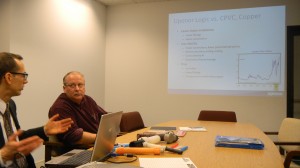 As a former trade-pub editor myself, I enjoy connecting with my old colleagues on their home turf in a relaxed and friendly setting. (Meeting with trade and consumer media in other major publishing centers for our building and architectural products field, such as New York, Washington and Des Moines, is a lot of fun, too.)
As a former trade-pub editor myself, I enjoy connecting with my old colleagues on their home turf in a relaxed and friendly setting. (Meeting with trade and consumer media in other major publishing centers for our building and architectural products field, such as New York, Washington and Des Moines, is a lot of fun, too.)
But the true beneficiaries—and properly so—are our clients and the editors themselves, who use these occasions to gain a better understanding of one another’s interests and needs on their way to forging deeper and more productive relationships.
Each media-tour meeting, which typically runs sixty to ninety minutes, merits its own approach, depending on the editor, the client and the season. But there are certain fundamentals for any get-together that will ensure success both during the meeting and in its aftermath. Pay close attention to these basics and, when all is said and done, you’ll have zero doubts about the value of the experience.
Fundamental #1: Have something to say. It’s not enough to just show up and plop down for a little coffee and chit-chat: This isn’t a chance encounter at a trade show. Editors are routinely cordial to their guests, but they will expect the meeting to have a specific intent, enabling them to learn things they don’t already know. Without a worthwhile agenda, you’ll likely have a hard time even getting on their schedules.
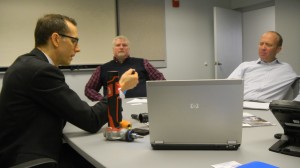 Previewing a new product is a great way to anchor a media tour: An editor’s main mission is to report on “what’s new,” so your audience will welcome an in-depth look at your latest offering. This approach is also a great way to generate a quick and tangible payoff on your meeting in the form of coverage of your new product in an upcoming issue.
Previewing a new product is a great way to anchor a media tour: An editor’s main mission is to report on “what’s new,” so your audience will welcome an in-depth look at your latest offering. This approach is also a great way to generate a quick and tangible payoff on your meeting in the form of coverage of your new product in an upcoming issue.
But editors are also on the prowl for content that is more general and not-so-brand-centric in scope. They need “big ideas” they can readily translate into feature stories, in line with their published editorial calendars.
So, in addition to announcing your newest product and what makes it so special, put all those messages in the context of the industry zeitgeist: Why this particular product at this particular time for this particular audience? What needs does it meet? How does it fit in with the general direction of the market? How does it differ from what came before?
What’s more, those questions need not be confined to a new product. Editors will generally welcome your POV on the overall industry (or at least your product category): where it’s been, where it’s headed and why, and how you are adjusting your strategies in response.
This type of big-picture presentation will deliver compelling ideas around which editors can build their own trends stories. And when they finally get around to writing such a story, guess whom they are most likely to contact for further insights and information?
Check back tomorrow for three more fundamental elements of a successful media tour, as well as a gallery of images from a recent tour for Uponor.
- May
- 19
Posted on May 19, 2011 by Erik Hoffer
So said panelists on the media breakfast hosted by BusinessWire in Chicago last week.
Featured guest speakers included Kathryn Janicek, Daypart Manager/Executive Producer, NBC 5 Chicago; Susanna Negovan, Editor-in-Chief, Michigan Avenue Magazine; and Kathryn Born, founder and Editor-in-Chief of both TINC Magazine (Technology Industry News – Chicago) and Chicago Art Magazine.
Here are several interesting points the speakers made during the event, some of which reinforced OR/DP’s view on media relations and some of which seem to be new concepts due to ever-evolving social media outlets:
- Don’t bother leaving voicemails with media. Due to meetings and appointments throughout the day, they may only have three hours at their desk and have no interest in fielding voicemails. It was noted that some media contacts have interns check voicemails once a week at best.
- One speaker estimated that she fielded only 20% of e-mail pitches. So how do you create the one in five that gets opened? Be creative with the subject line without burying the lead for the content that is being pitched. Keep e-mail pitches to one paragraph (without attachments) if possible. When pitching by phone, don’t bother introducing yourself. Just get straight to the point of the pitch as you would with an e-mail.
- Relating to the brevity of pitches, more media contacts are accepting them via social media such as Twitter and Facebook. NBC’s Janicek even welcomed receiving creative pitches via cell phone text messages (if one is lucky enough to get her number).
- Take the time to review a publication’s content and tie it into your pitches if possible. Media contacts appreciate someone who knows their publication, news program, etc. and takes time to do the research.
- Apr
- 8
Posted on April 8, 2011 by John OReilly
Each year, more than 2,500 Americans die and another 13,000 are injured — many of them critically — in home fires that also cause nearly $8 billion in property damages. Home fire sprinklers can help eliminate this pointless waste of life, limb and property.
Earlier this week, Uponor senior product manager Jayson Drake and senior brand manager Ingrid Mattsson carried this important message to several major shelter publications in New York City and Connecticut, bringing their editors up to speed on the outlook for residential fire sprinklers and the particular benefits of multipurpose-type systems. Among the media outlets visited: Country Living, Fine Homebuilding, kbculture, Popular Mechanics, and This Old House.
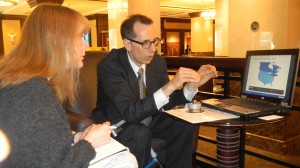
Jayson Drake (right) with Leslie Clagett of kbculture
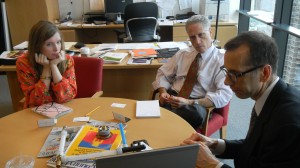
Jayson Drake (right) with Page Mullins (left) and Chris Allen of Country Living
- Jun
- 22
Posted on June 22, 2010 by Nora DePalma
Iconic Advertising Age critic Bob Garfield retired earlier this year after 25 years with the magazine. In his final column, he offered a rundown of the best and worst ad campaigns he saw in his career.
 Included amongst the “winners” was American Standard’s 1993 “It’s Seen You Naked” ad, which “subtly anthropomorphized” bath fixtures like faucets and tub drains and featured the copy “It’s seen you naked. It’s heard you sing.”
Included amongst the “winners” was American Standard’s 1993 “It’s Seen You Naked” ad, which “subtly anthropomorphized” bath fixtures like faucets and tub drains and featured the copy “It’s seen you naked. It’s heard you sing.”
The campaign was the brainchild of advertising executives Tom Gabriel and Mark Razidlo, now at Gabriel, deGrood, Bendt, who worked closely with the then-Marketing Communications Manager at American Standard, Nora DePalma to develop the ad.
Gabriel’s goal with the campaign was to change the way people thought about American Standard and even about their relationships they had with their bathrooms. “Their competitor owned the luxury position, the ‘house on the hill,’” he explained. “We felt there was another way into the minds and hearts of upscale consumers: to demonstrate that American Standard understands the way we really live…specifically the relationship we all have with this one special room in the house. These days, creating shared connections between brands and their consumers takes different forms, but it’s still all about finding that common ground and evoking empathy and understanding.”
At the time, not everyone was entirely on board with the bold campaign. DePalma remembered that “literally everyone from office peers to my parents hated the ad. But I felt confident in the risk, because I’d seen the research. I knew what our competitors had to spend on marketing and I knew we couldn’t overcome it; we had to go someplace different as a brand to be accepted in consumers’ minds.”
While DePalma and Gabriel were both right in their feelings about the ad, even they weren’t able to predict just how big of a splash the campaign would make. A few years ago, Gabriel saw Bob Garfield at an ad function and was surprised when the critic told him he thought “It’s Seen You Naked” was the best print ad ever done. “At the time, I thought he was pulling my leg,” Gabriel recalled. It turns out that Garfield was definitely being genuine in this compliment.
In equally good news, our Uponor client now works with GdB Advertising, where Gabriel and Razidlo now work. All of us at O’Reilly/DePalma are thrilled to have the opportunity to once again collaborate with with our old friends and look forward to doing more great work together.
- Jan
- 2
Posted on January 2, 2010 by Nora DePalma
The smart social media techniques practiced by O’Reilly/DePalma were profiled in the January/February issue of Oz Magazine, which examines how “Creative and Communications Professionals Create Their Own Social Media Presence.”
In the piece, principal Nora DePalma explains the agency’s use of various sites like Twitter, LinkedIn, and Facebook, and outlines how useful social media has been for building and strengthening relationships.
View the complete Oz Magazine article by following the link.
- Oct
- 25
Posted on October 25, 2009 by Nora DePalma
Marketing’s Drift Away from Media - BusinessWeek
Business Week reports on “below the line” marketing: tactics that do not involve advertising in specific online or offline media:
” Experiential marketing, high-profile events, and online content accounted for 62% of total marketing spending in 2008, up from 57% in 2004, according to a survey by Veronis Suhler Stevenson.” Read more.

